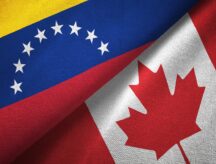Premiers make recommendations for improvements to immigration
Attracting and retaining skilled foreign workers was one of the main topics at a recent Premiers Meeting in Victoria, British Columbia.
Canada’s unemployment rate stands at a historically low 4.9% and as a result, the country is facing a shortage of labour. The shortage is due in large part to many of Canada’s aging workers retiring and an extremely low birth rate.
Immigrants are seen as a major part of the solution to fixing the labour shortage. The Immigration Levels Plan 2022-2024 plans to welcome over 450,000 new permanent residents to Canada by 2024. However, some provinces believe this number alone is not sufficient to close the gaps in Canada’s workforce.
Discover if You Are Eligible for Canadian Immigration
For example, Ontario’s immigration minister Monte McNaughton has said that there needs to be nearly double the amount of skilled economic immigrants arriving in Ontario. In 2021, the province was able to select 9,000 under its Provincial Nominee Program (PNP) and the allocation has been raised to 9,700 for 2022.
Immigration is a shared responsibility
The provinces, territories, and the federal governments share jurisdiction over immigration policy. Every province and territory, except Nunavut, has a bilaterial agreement with Immigration, Refugees and Citizenship Canada (IRCC) on how this responsibility is shared and how many new immigrants a province can evaluate to arrive as economic class immigrants.
During the meeting, the premiers agreed that provinces should have more of a say in selecting the immigrants who come to their province. Ontario’s Premier Doug Ford told the Toronto Star while in Victoria that he would prefer a system much like Quebec’s, which selects nearly 90% of its economic class immigrants.
Premiers typically meet at least once a year to discuss issues that are common among them and later present a united argument to the federal government for increased resources. Canadian premiers are the political head of a province and represent provincial interests in Canada’s federal government. Canada has 10 provinces and three territories.
Overall, the premiers have made a few key recommendations to IRCC that they believe will increase the flow of skilled labour into the provinces.
Support retention of international students
International students are a valuable resource to combat the labour shortage, but they can face difficulties obtaining a work permit after graduation. To ensure Canadian-educated international students stay in Canada, premiers are urging the federal government to remove barriers that hinder international students from accessing federal employment support programs.
This includes working together with provinces and territories in optimizing the Post-Graduate Work Permit (PGWP). The goal is to help international students to meet local workforce needs and offer a more efficient transition to permanent residency.
PGWPs allow graduates to live and work in Canada for up to three years after they complete their studies, and they may use the work experience they gain to eventually apply for permanent residency.
Expand Provincial Nominee Programs
As part of the provincial-federal immigration agreements, provinces have some say in selecting skilled foreign workers who they feel are best suited to life in a specific province. This is done through Provincial Nominee Programs (PNPs). The premiers are asking for increased resources towards processing permanent residence applications from candidates with provincial nominations.
As it stands, IRCC’s Immigration Levels Plan allocates a certain number of spaces for skilled immigrants to receive provincial nomination. As noted, in the case of Ontario for example, certain provinces believe that the current provincial allocations are not high enough and they would like to see the number significantly increase. This may ensure that most economic immigrants who arrive in the province are well-suited to the labour force.
The provinces also recommend more collaboration between each province and the federal government to ensure there are multi-year plans in place that encompass growing provincial labour needs and priorities.
Tackle backlogs and processing delays
Provinces and territories all agree that one of the most significant hurdles to attracting global talent is the length of time IRCC takes to assess and process applications. They have asked the government to improve processes in this area.
The federal government is aware of the need to improve here. Last month, Prime Minister Trudeau announced the creation of a new task force to pinpoint the most critical problems within the immigration application processing system and create both short-term and long-term plans to address the issues.
Improve credential recognition
Closer to home, there are skilled workers who have arrived in Canada but are unable to work in their fields due to a lack of Canadian accreditation.
Provinces seek to work with federal regulatory bodies to streamline the process of getting skilled workers the necessary accreditation that aligns with Canadian occupational standards.
Discover if You Are Eligible for Canadian Immigration
© CIC News All Rights Reserved. Visit CanadaVisa.com to discover your Canadian immigration options.
- Do you need Canadian immigration assistance? Contact the Contact Cohen Immigration Law firm by completing our form
- Send us your feedback or your non-legal assistance questions by emailing us at media@canadavisa.com





